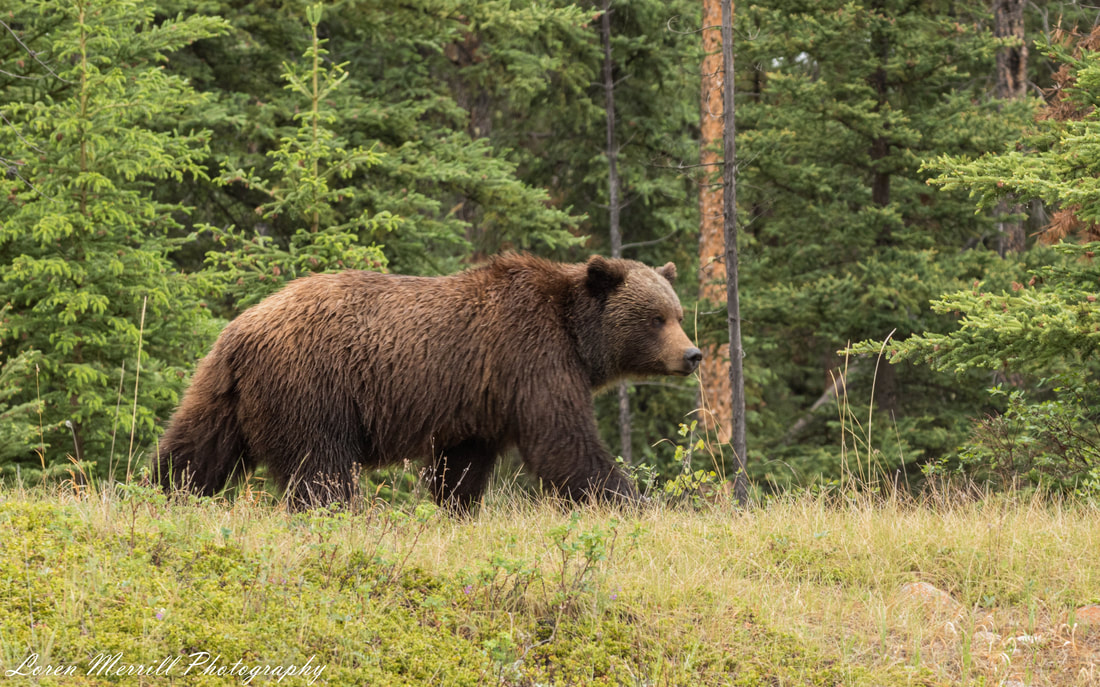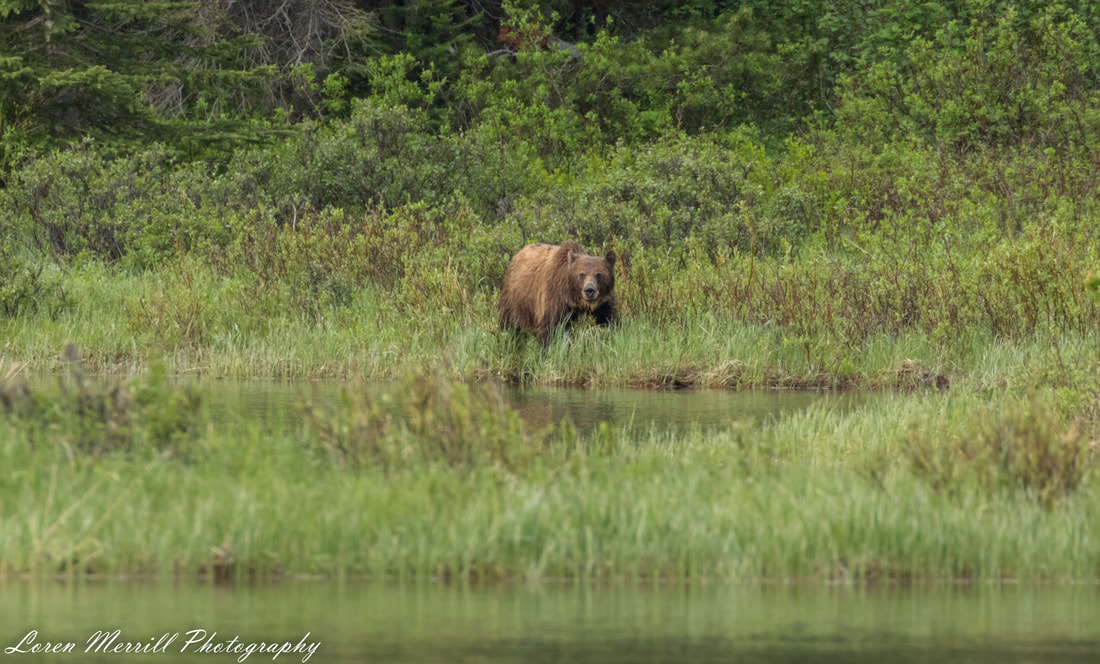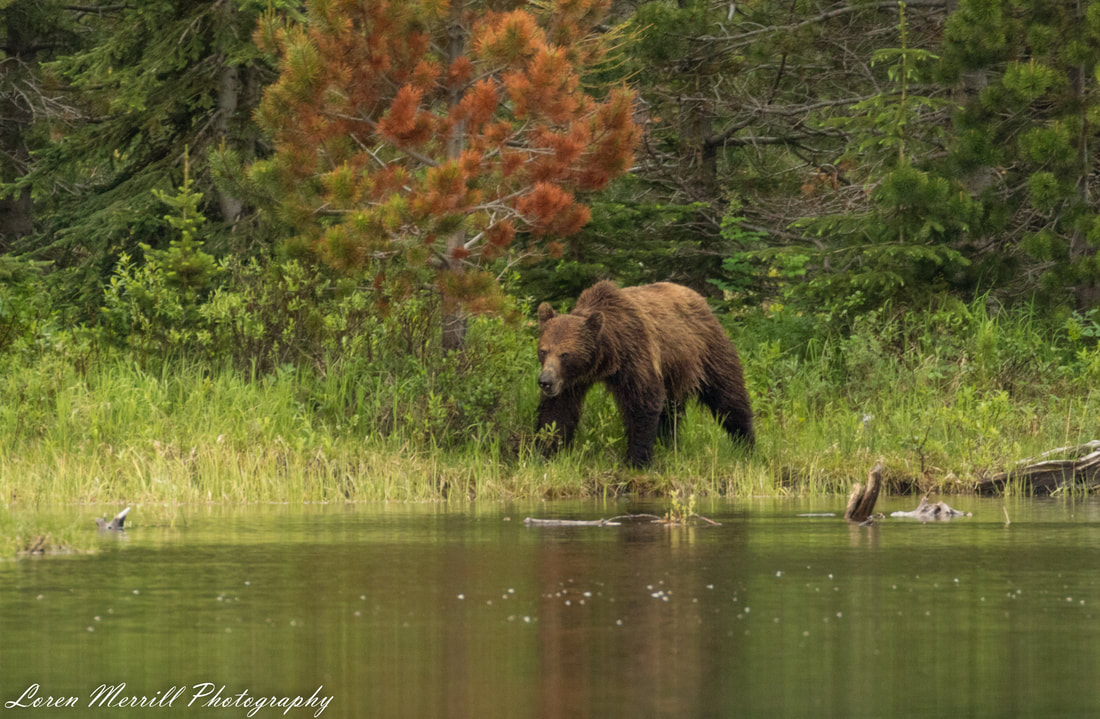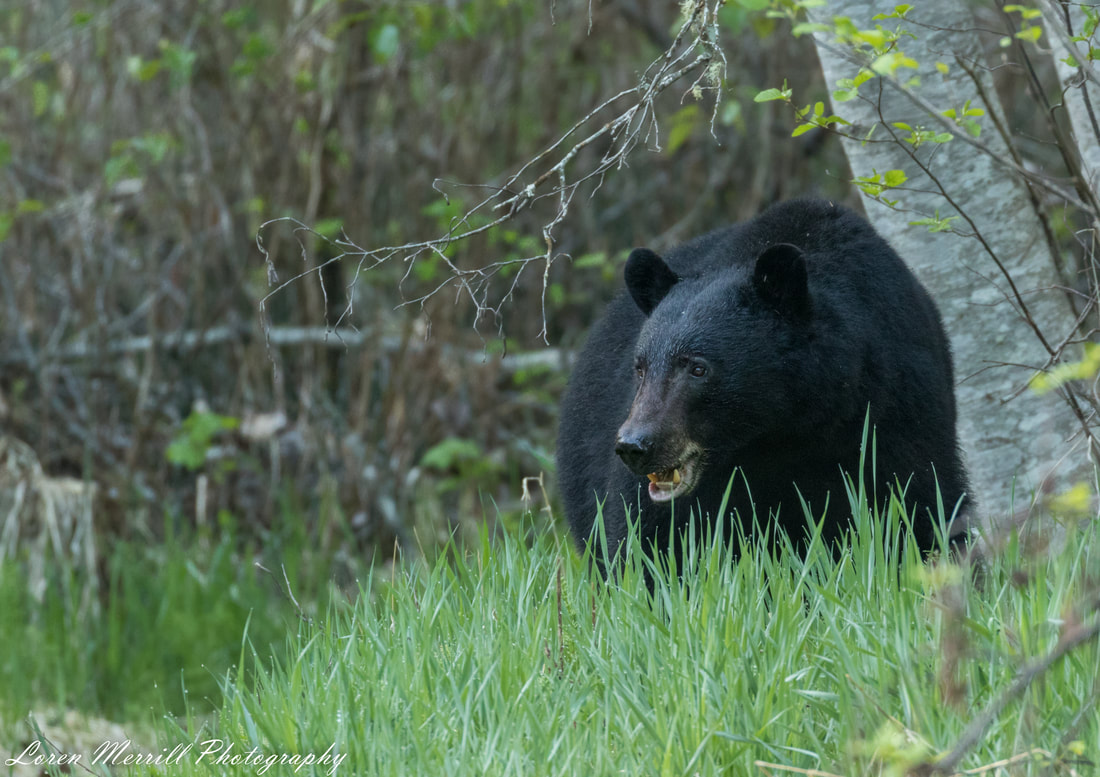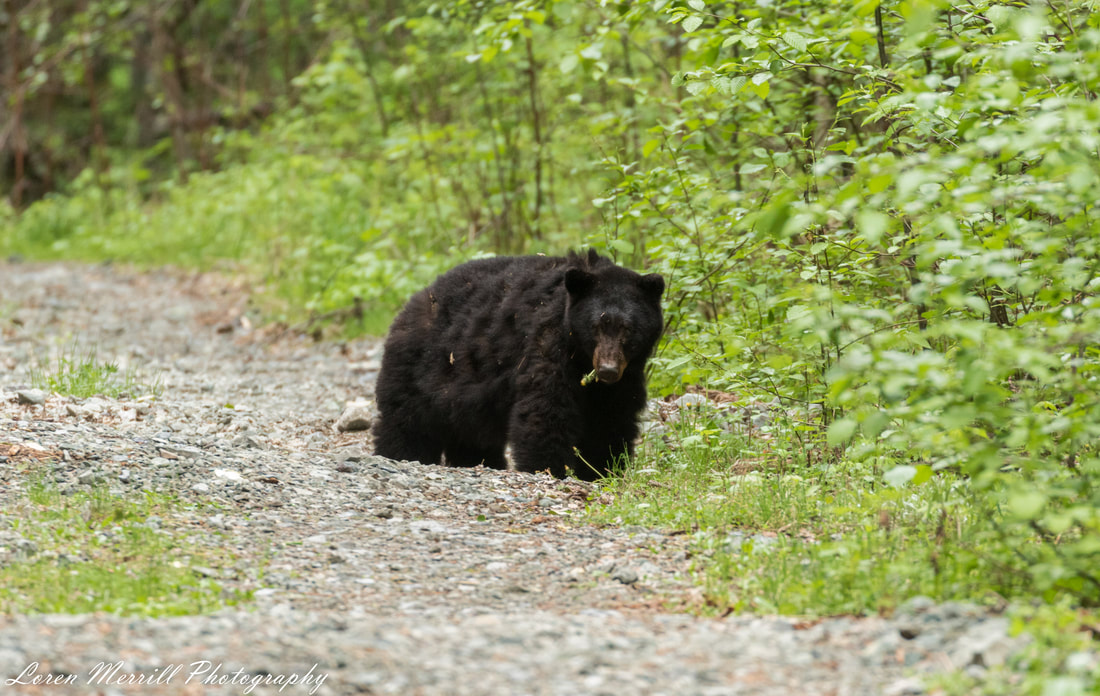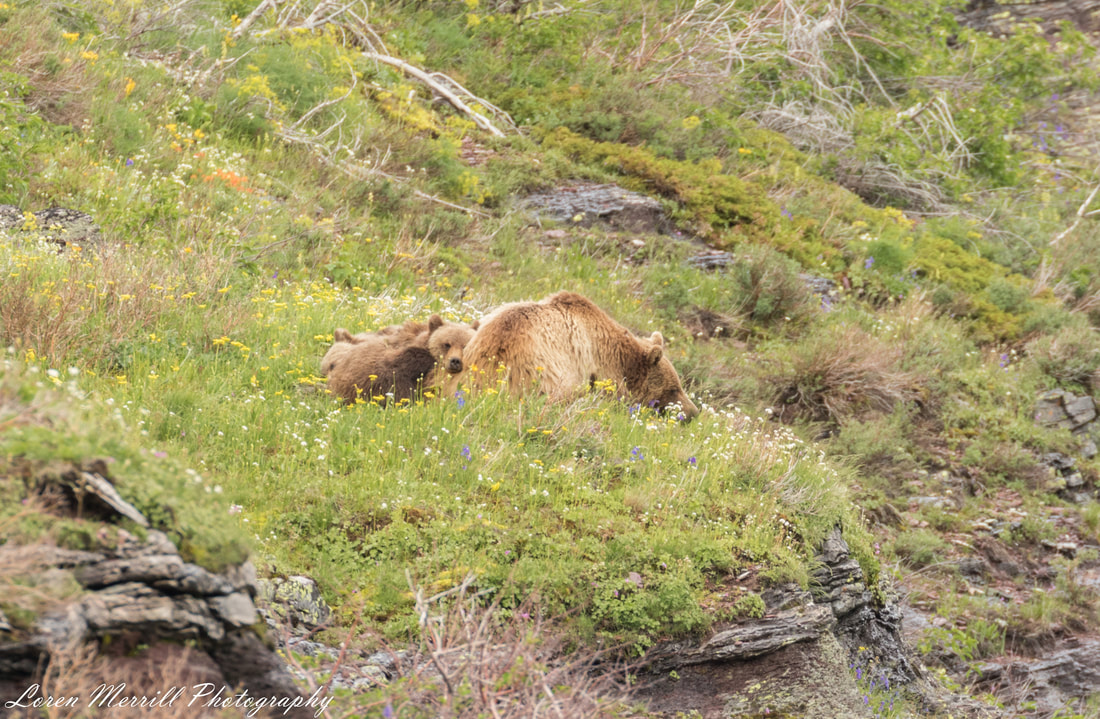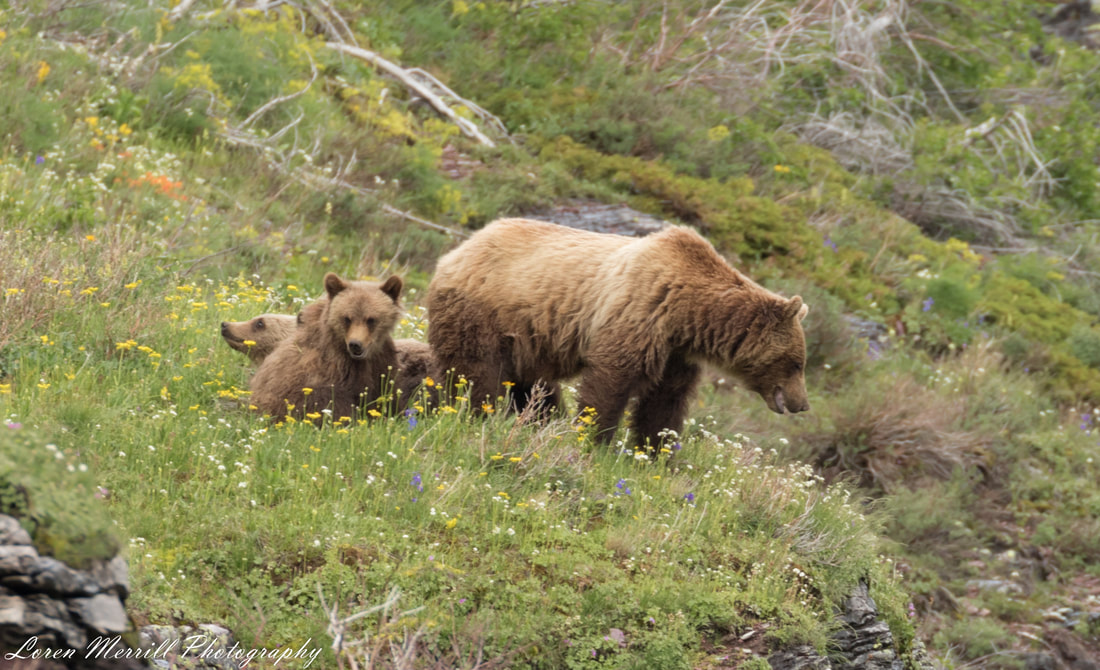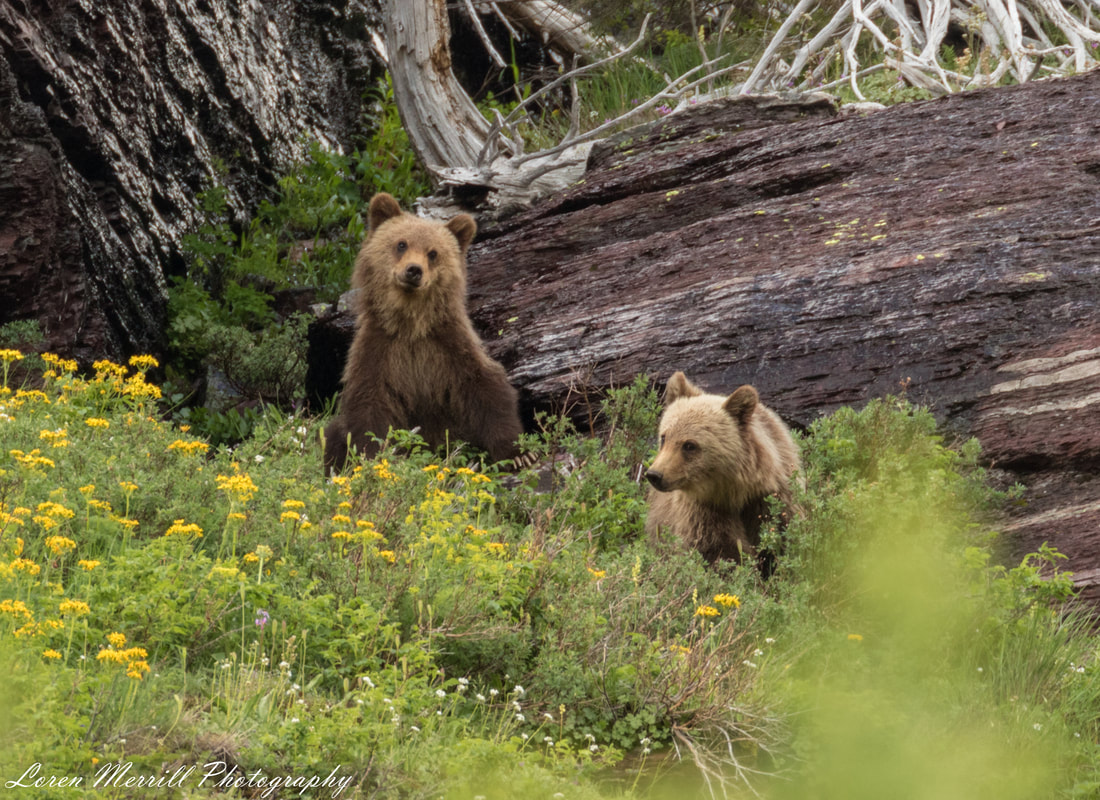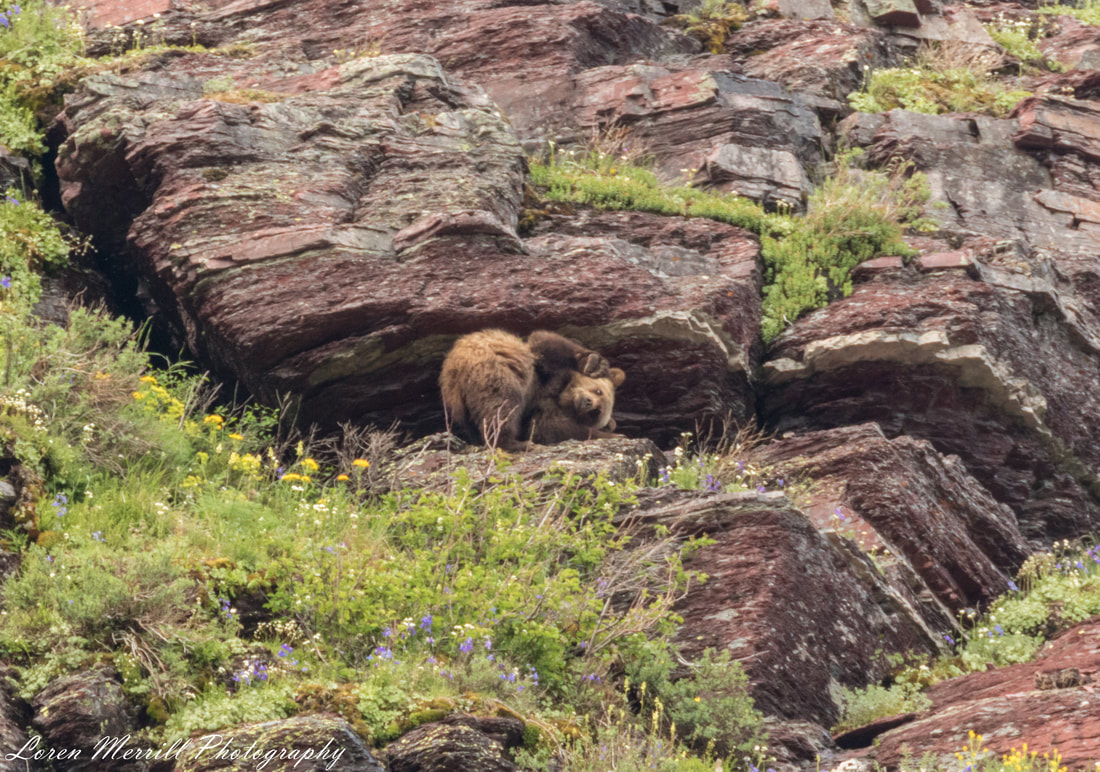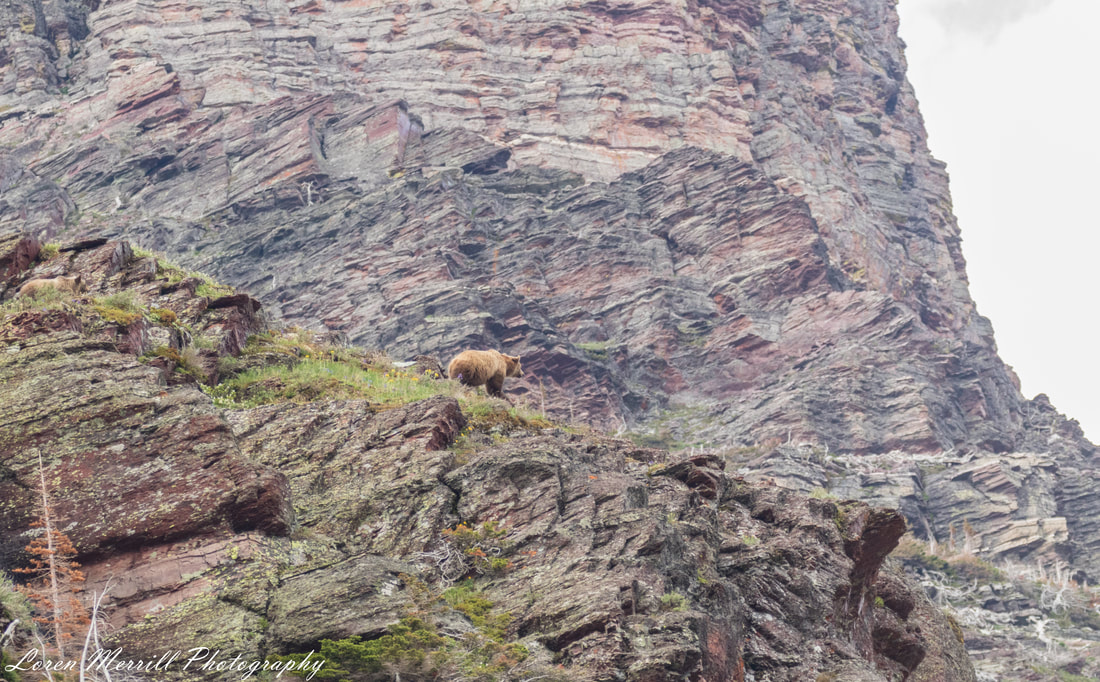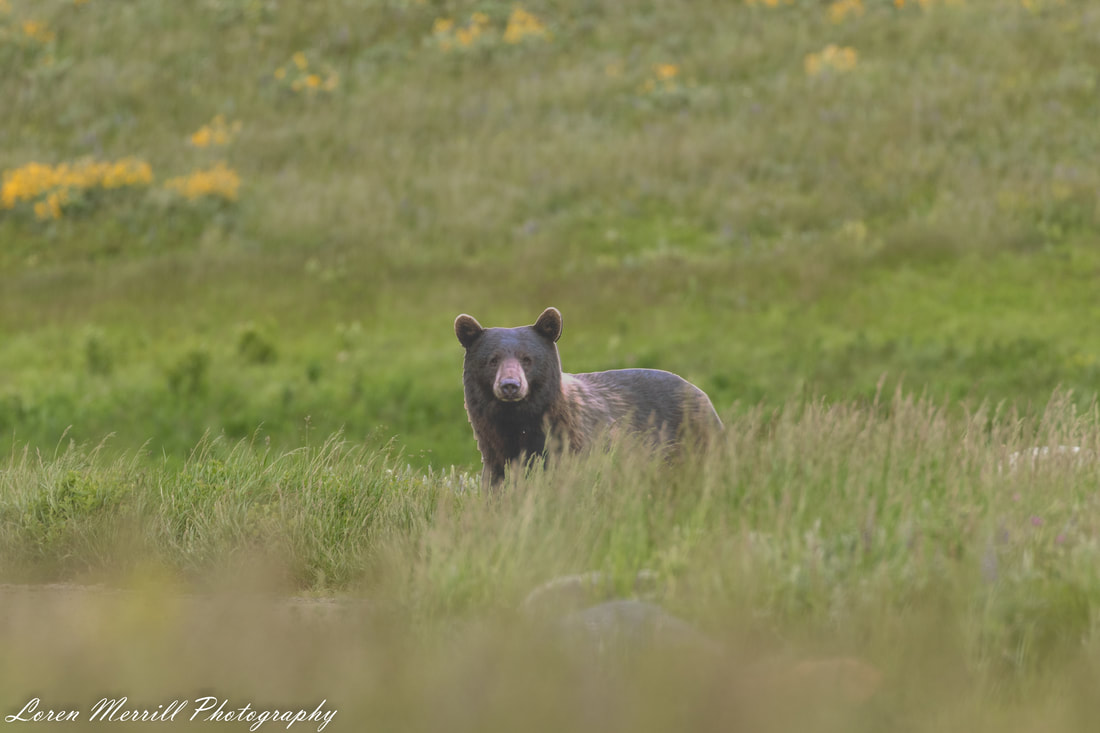|
“He’s coming.” I stood up from the crouch I had been in and removed the canister of bear spray from its holster. For the previous 20 minutes I had been watching a good-sized grizzly bear make his way around the edge of a small lake in Glacier National Park. He dutifully followed the lake’s perimeter, tracing the outline of each inlet and cove. But when he made it to my side of the lake, he had disappeared, obscured by the contours of the shoreline. I waited and watched, searching for any sign of him, and when I saw the ripples in the water, I knew he was headed right for me and the two hikers I had just met. “Ok—stand next to me, side by side, and have your spray in your hand,” I instructed the young couple, whose morning had just gotten a lot more exciting than they had expected. Or wanted. “He knows we’re here, but when he appears, I’m just going to talk to him to let him know everything’s cool.” I was doing my best to sound calm and confident so that the couple wouldn’t lose their composure, but I could feel the adrenaline beginning to kick in. And then, about 25 feet from where we stood, the massive honey-brown head and shoulders of the bear emerged from the vegetation and paused. The bear looked out with his small, dark eyes, scanning the area, and I began talking to him in what I hoped was a soothing, non-threatening tone. The bear took a few moments to assess the situation, and then, without looking at us directly, resumed walking. I quickly realized he was following the hiking trail. The same one, it just so happened, that we were on. And unfortunately, we were situated at a point where the path hugged the lake, meaning there was nowhere for us to go unless we wanted to take a dip. The distance between us shrank rapidly, and I could feel a few butterflies begin to flit around my stomach. I continued talking to the bear, doing my best rendition of Barry White’s deep-bass voice (which, if we’re being honest, is a terrible rendition of Barry White). Suddenly, and to my relief, the bear detoured off the path, giving us a nice buffer before rejoining the trail about 20 feet further down. He broke into a slow lope and vanished around the corner. I turned to my companions with a big smile on my face. “Can you believe that just happened?!?” The looks on their faces said that they couldn’t, and that perhaps a change of clothes was in order. We talked about the encounter, and how different it had been from their previous experience with a grizzly the day before. They had been on a trail when the people in front of them saw a grizzly nearby and began freaking out. This scared the young couple, so they started running back the way they had come. They never even saw the bear, but the experience had left them shaken and given them some serious anxiety about encountering another bear (the term “bearanoid” was common parlance for this sentiment in Glacier). Our encounter, in contrast, was a textbook example for how things could go, and I was thrilled that this couple was able to rewrite their bear-story so quickly. An important point I want to hit on is that I had no preconceived notion for how that bear was going to react to us; I prepared us for a worst-case scenario (although there are very few instances of bear attacks with groups of three of four people, especially when they are spaced side-by-side), but I watched the bear constantly while it was visible to look for clues as to how it would act. My interpretation of the bear’s unwillingness to look at us directly was that this was a subordinate individual who was not interested in challenging us. But we all know what happens when we assume things about bears—“u” and “me” might wind up coming out a bear’s “as-”… well, you get the picture. The point is, every bear encounter is unique, and should be treated as such, with caution and respect. For me, the encounter marked my (approximately) 125th bear sighting between mid-April and mid-June. Granted, a number of those sightings were from vehicles, and perhaps 20 of them were “Albert” sightings (our resident black bear at Katie and Dennis’s in Bella Coola). But over that short period of time, I had been afforded an opportunity to observe and occasionally interact with a good number of black bears and grizzly bears. Much of the time, the bear would bolt into the woods as soon as it saw me. Bears can move incredibly fast for their size: a grizzly can outrun a horse over short distances, topping 35mph. Moreover, bears are capable of running uphill at almost the same speeds they can attain on the flat. And if you’ve never seen a large grizzly run through a patch of scrubby trees, picture the opening scene in Jurassic Park when the trees are all swaying side to side as the giant machine comes crashing through. But the next story I want to share doesn’t involve bears running, or trees swaying; just a bear and a barbed wire fence. This story takes us back to Bella Coola, and a nice cool mid-May morning. I was walking down a former logging road through a section of second growth forest that was very bird-y and very bear-y. The dirt road was bordered on one side by a steep, heavily forested slope, and on the other side by an old barbed wire fence. I was padding along quietly, listening to the forest’s rich repertoire of sounds; the scolding chatter of an angry red squirrel, the crinkle of old leaves getting tossed by robins and varied thrushes in the underbrush, the metallic hum of a rufous hummingbird’s wings as it foraged at a patch of columbine, and the songs of countless birds staking out their territories. I looked up ahead and saw a large black bear grazing on some fresh grass along the road. It was facing away from me and had not yet heard me, so I eased off to the side in an attempt to blend in with the vegetation. I couldn’t go very far, however, because the barbed wire fence was only a few feet back from the road edge. I stood next to the fence, quietly watching the bear eat. It then turned around and began walking in my direction. I didn’t want to disturb the bear’s morning meal, so I thought if I could just slip over the fence, I’d be able to let it eat in peace and remain safely out of its way. I pressed down on the top line of the barbed wire with one hand and stepped over the fence with one leg. But I was trying to keep an eye on the bear, and keep my camera from banging around, so I failed to give the maneuver the full attention it warranted. As such, I didn’t realize that: A) even when pressed down, the fence was taller than my crotch, and B) I was stepping over the point at which my hand was holding the fence down. What this means is that I pushed my hand into the barbed wire with my thigh. I felt a sting in my palm but held on and managed to get fully over the fence. When I was safely on the other side, I looked down at my palm and the red bead forming in the middle. Then I looked at the barbed wire and the deep coating of rust covering it. I looked back up the road and saw the bear still walking towards me, blissfully unaware of the absurd fiasco I had just created. I tried to recall the timing of my last tetanus shot while also assessing whether I wanted the bear to get any closer. I had a sneaking suspicion that the barbed wire wouldn’t be much of a deterrent for the bear if it wanted to get through it, rust or no rust, so when the bear was within 50 feet, I gave a little whistle to let him know I was there. He looked up sharply, and immediately turned around and walked back the way he had come. I waited until he had rounded the corner, and then I eased myself back over the deathtrap fence. I walked back to the car mentally kicking myself and remembering horror stories of people who had gotten tetanus. My last shot had been 7 years prior, and I had no idea if I would need a booster, or if I would even be able to get one in Bella Coola. I called the health clinic once I was back home, and they told me I should definitely come in. When I arrived, the nurse administering the shot asked what had happened, so I recounted my misadventure while she jabbed the needle into my arm. She seemed amused by the story and told me to come back if the wound showed any signs of infection. I left thinking that it was fitting that one little puncture had gotten me into trouble, and another had gotten me out of it, and wondering if anyone else had ever needed to get a tetanus shot because they had cut themselves while climbing over a barbed wire fence to avoid a bear. I’m not sure I’ll ever know the answer. We return to Glacier for the next bear encounter, and a beautiful subalpine mountain setting. I was descending the Grinnell Glacier Trail in the early evening when I caught sight of a light brown blob a little way across and up the slope. I looked through my binoculars and the blob turned into a mother grizzly sleeping with her two yearling cubs. They were lying in a bed of mixed wildflowers located just back from a ledge that overlooked the trail maybe 60 feet below. As I watched the bears snooze, a group of hikers came up the trail. The sounds from the group woke the mom, and she slowly got to her feet and walked to the edge of the rock ledge to look down at the activity below. When the hikers reached me, I pointed to the bears, and they admired them for a few minutes before continuing. A few more sets of hikers passed by going down the trail, and mom bear decided it was time for her and the cubs to be moving on. She led them across the steep slope, pausing now and again to snack on some greens. During one of these snack stops, the cubs found an overhanging rock that made a perfect grizzly-cub sized back-scratcher. One of the yearlings got really into the action; he stood on his hind limbs and scratched up and down, side to side, and even contorted his body sideways to get all the spots. After mom had eaten her fill, and the cubs had itched all their scratches, mom led the cubs up slope and over the ridge, vanishing into the maw of the mountain wilderness. I’ll close this week with one of the more unusual, and frankly disturbing, bear encounters I’ve had. I was in Waterton Lakes National Park, which is located in Alberta just north of the border with Montana. Waterton abuts Glacier National Park, and together they form a massive international parcel of protected land. Waterton suffered devastating wildfires in 2017 which burned 40% of the park. I was stopping in Waterton for a few nights on my way to Glacier, and my first full day in the park I had walked almost 20 miles without seeing much wildlife. The wildflowers were stunning, and it was fascinating to see how some areas of the park were recovering nicely, whereas others (which had presumably burned too hot) were still bereft of plant life. But in terms of large wildlife, I was striking out. I decided I would try one final hike in the evening along a road that was closed to car traffic. I was the only person out at that hour, and I was on alert for any and all activity. After I had hiked about 2 miles, I came over a slight rise and saw a pair of ears and a head—a black bear among the tall grasses. I stopped and waited to see if the bear had noticed me. Nothing happened, so I moved a little bit closer to get a better view of what the bear was doing; it was looking right at me, not moving a muscle. I had seen bears exhibit this sort of behavior before when they were trying to figure out what something was, so I wasn’t too worried at this point. I snapped a couple of photos, and took a few more steps to the side. Still no reaction from the bear. Now I was beginning to get concerned. It was still staring at me and had not moved an inch. I took a few steps back at that point, removed my bear spray, and began talking to the bear in an attempt to diffuse the mounting tension. My talking and slow retreat had no effect; its small beady eyes were still locked on me. I briefly wondered if maybe this wasn’t a real bear. Could it be that the park had placed a stuffed bear out in the grasslands? A quick look at the images on my camera’s LCD screen convinced me it was real. I decided I should begin making my way back to my car, so I walked backwards away from the bear keeping a close eye on it to see if it would follow. I dropped below the point at which I could see the bear and turned to begin my retreat in full. After 10 steps I came to an abrupt halt and decided I couldn’t walk away from this bizarre situation. I slowly retraced my steps and the bear’s profile appeared in the same spot, still staring right at me. I took another photo, zoomed it in all the way, and finally saw it; the smooth ridges on the bear’s neck. I had been talking to, and retreating from, a bear cut-out. Now this was no ordinary cut-out; it was an immaculate piece of deception. A con-job for the ages. And I felt like a complete idiot. The bear was clearly meant to give drivers coming over the hill a good start, but it had fooled me for 15 minutes. I blamed the distance (I hadn’t wanted to get too close), the failing light (it was dusk after all), and my lack of having seen any big game all day (I really wanted to see a bear), but my ego lay in ruins. I decided I would delete all the images and never breath a word of this to anyone. But my resolve on that wobbled, and I eventually (weeks later) told my wife the story. She thought it was wonderful and insisted I share the story here. And so now I have.
Next week: Alberta’s Hidden Gem: Beauvais Lake Provincial Park Note: We are starting a View Out the Door weekly newsletter. If you would like to get notifications about when new posts are up, and other tidbits related to the blog, email [email protected] with the subject header SUBSCRIBE.
2 Comments
Manju
1/1/2021 11:11:00 pm
Sir,
Reply
Loren Merrill
1/11/2021 08:48:57 am
Hi Manju,
Reply
Leave a Reply. |
About the author:Loren grew up in the wilds of Boston, Massachusetts, and honed his natural history skills in the urban backyard. He attended Cornell University for his undergraduate degree in Natural Resources, and received his PhD in Ecology from the University of California, Santa Barbara. He has traveled extensively, and in the past few years has developed an affliction for wildlife photography. Archives:
|
